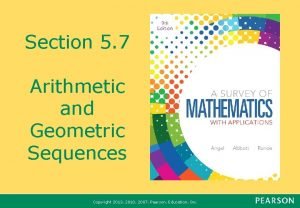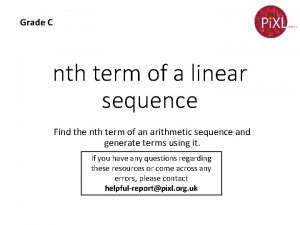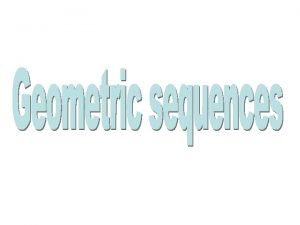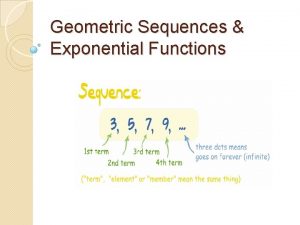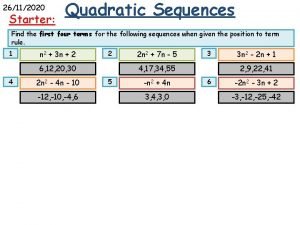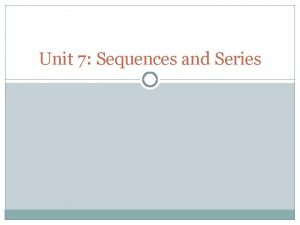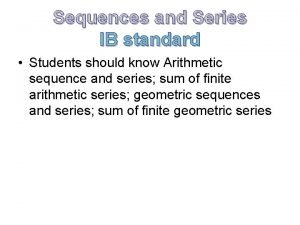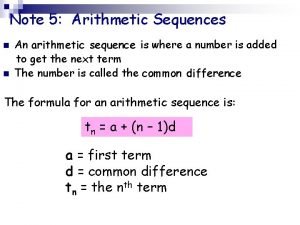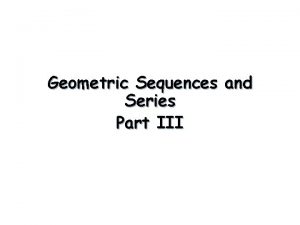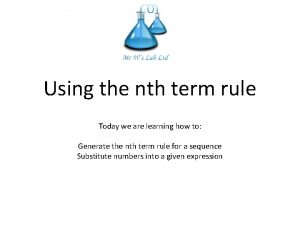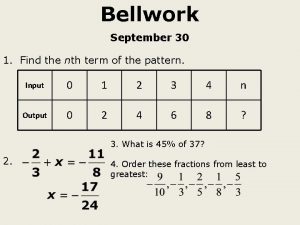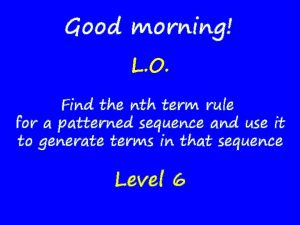12 FURTHER MATHEMATICS Rules for the nth term
















- Slides: 16

12 FURTHER MATHEMATICS Rules for the nth term in a sequence modelling geometric growth or decay

Rules for the nth term in a sequence modelling geometric growth or decay While we can generate as many terms as we like in a sequence using a recurrence relation for geometric growth and decay, it is possible to derive a rule for calculating any term in the sequence directly. This is most easily seen by working with a specific example.

modelling geometric growth or decay We invest $2000 in a compound interest investment paying 5% interest per annum, compounding yearly. If we let Vn be the value of the investment after n years, we can use the following recurrence relation to model this investment: V 0 = 2000, Vn+1 = 1. 05 Vn Using this recurrence relation we can write out the sequence of terms generated as follows: V 0 = 2000 V 1 = 1. 05 V 0 V 2 = 1. 05 V 1 = 1. 05(1. 05 V 0) = 1. 052 V 0 V 3 = 1. 05 V 2 = 1. 05(1. 052 V 0) = 1. 053 V 0 V 4 = 1. 05 V 3 = 1. 05(1. 053 V 0) = 1. 054 V 0 and so on.

modelling geometric growth or decay Following this pattern, after n year’s interest has been added, we can write: Vn = 1. 05 n x V 0 With this rule, we can now predict the value of the nth term in the sequence without having to generate all of the other terms first.

modelling geometric growth or decay For example, using this rule, the value of the investment after 20 years would be: V 20 = 1. 0520 × 2000 = $5306. 60 (to the nearest cent) This rule can be readily generalised to apply to any geometric growth or decay situation.

modelling geometric growth or decay

modelling geometric growth or decay Exactly the same rule will work for both growth and decay because growth or decay depends on the value of R, not the format of the calculation. This general rule can also be applied to compound interest loans and investment and reducing-balance depreciation.

modelling geometric growth or decay

modelling geometric growth or decay

modelling geometric growth or decay

modelling geometric growth or decay

modelling geometric growth or decay

modelling geometric growth or decay

modelling geometric growth or decay

modelling geometric growth or decay

WORK TO BE COMPLETED Exercise 8 F – All Even Questions
 Term to term rule example
Term to term rule example How to calculate nth term
How to calculate nth term Gp formula
Gp formula Nth term test
Nth term test How to find the nth term
How to find the nth term Nth term geometric sequence
Nth term geometric sequence Geometric sequence formula sum
Geometric sequence formula sum Nth term starter
Nth term starter Nth term of a quadratic sequence
Nth term of a quadratic sequence Geometric series exponential
Geometric series exponential Equation for quadratic sequence
Equation for quadratic sequence Writing arithmetic sequences
Writing arithmetic sequences Number pattern formula
Number pattern formula Geometric series formula
Geometric series formula Sequence formula
Sequence formula Geometric sequence formula for the nth term
Geometric sequence formula for the nth term Sum of gp
Sum of gp


